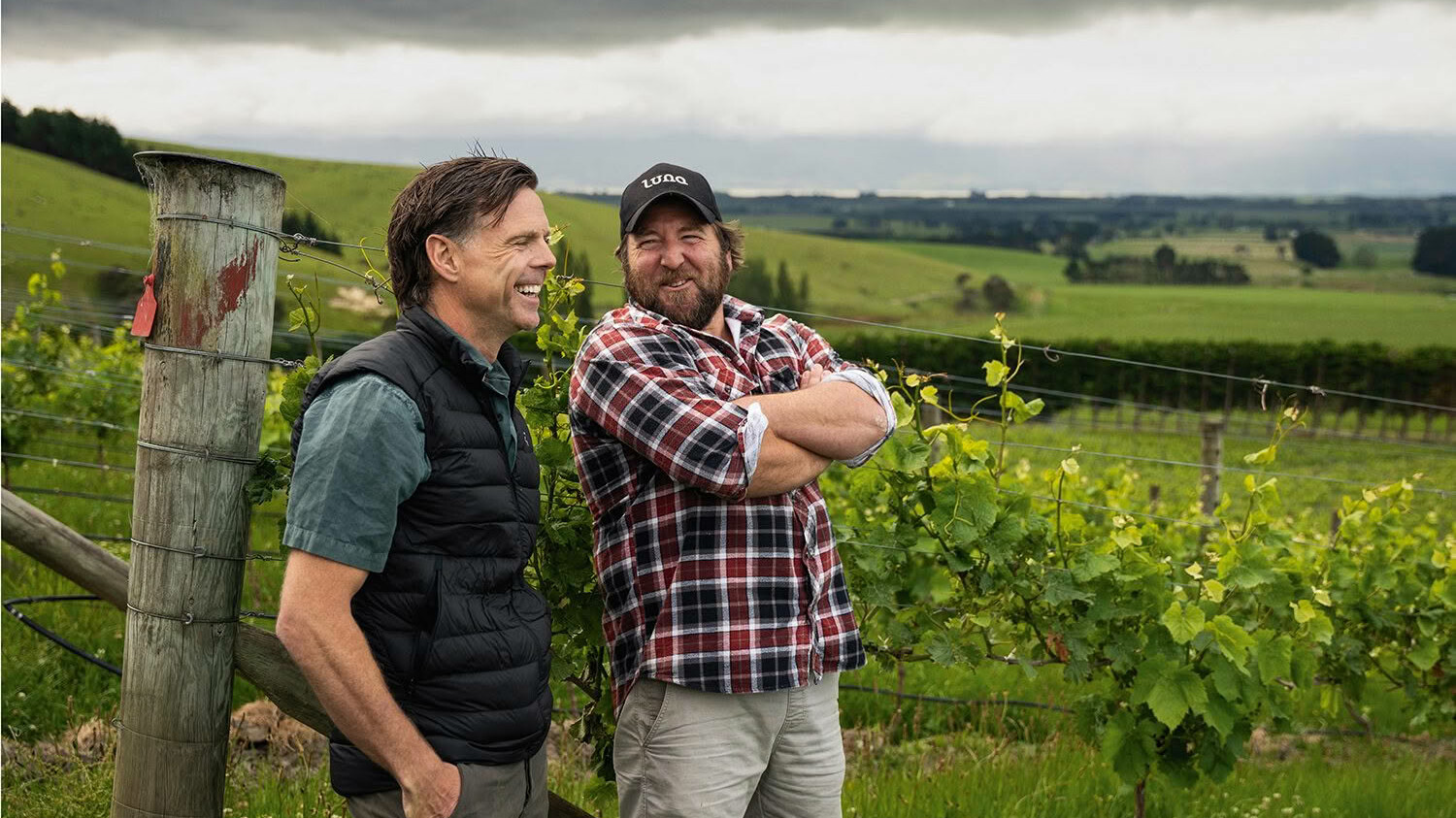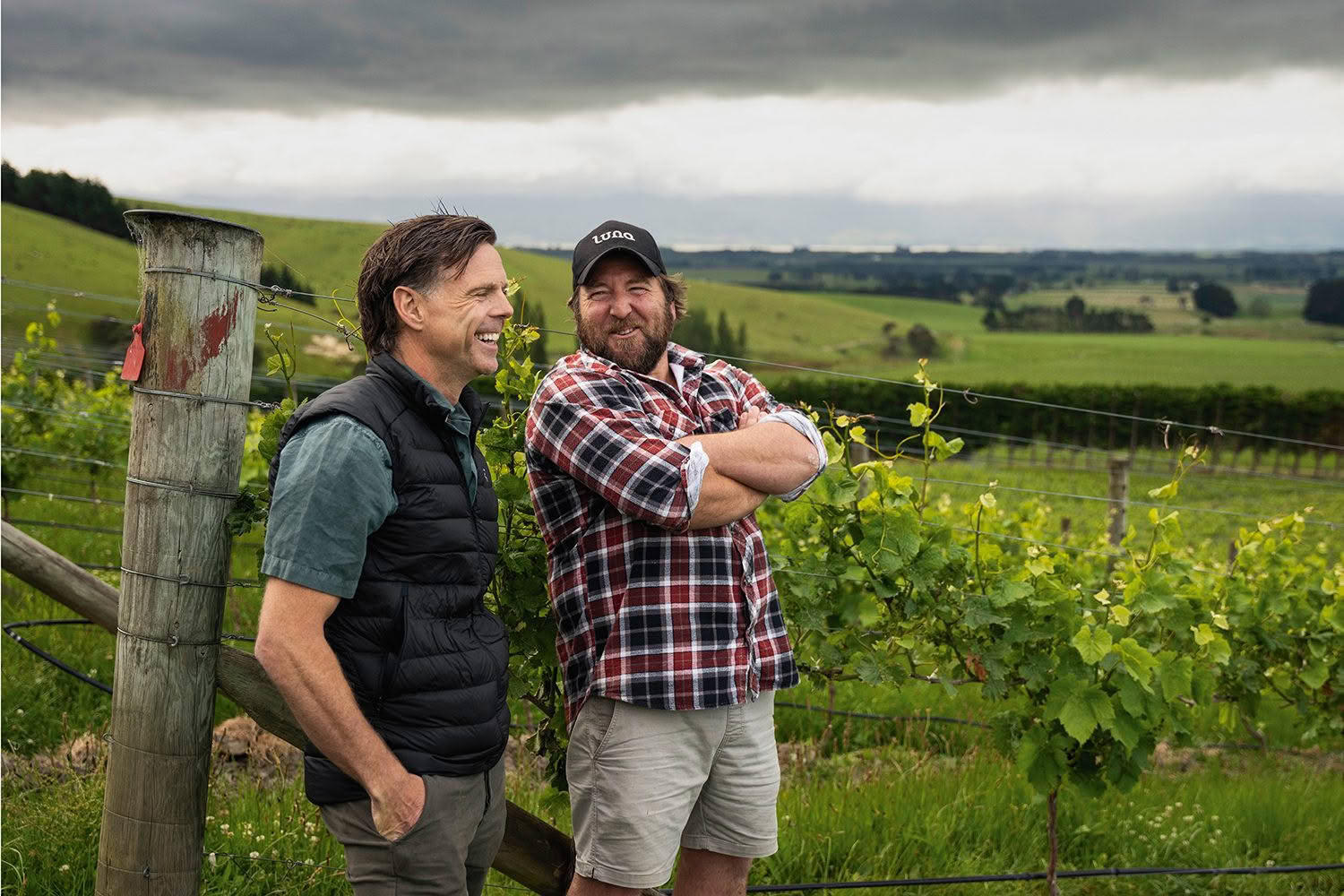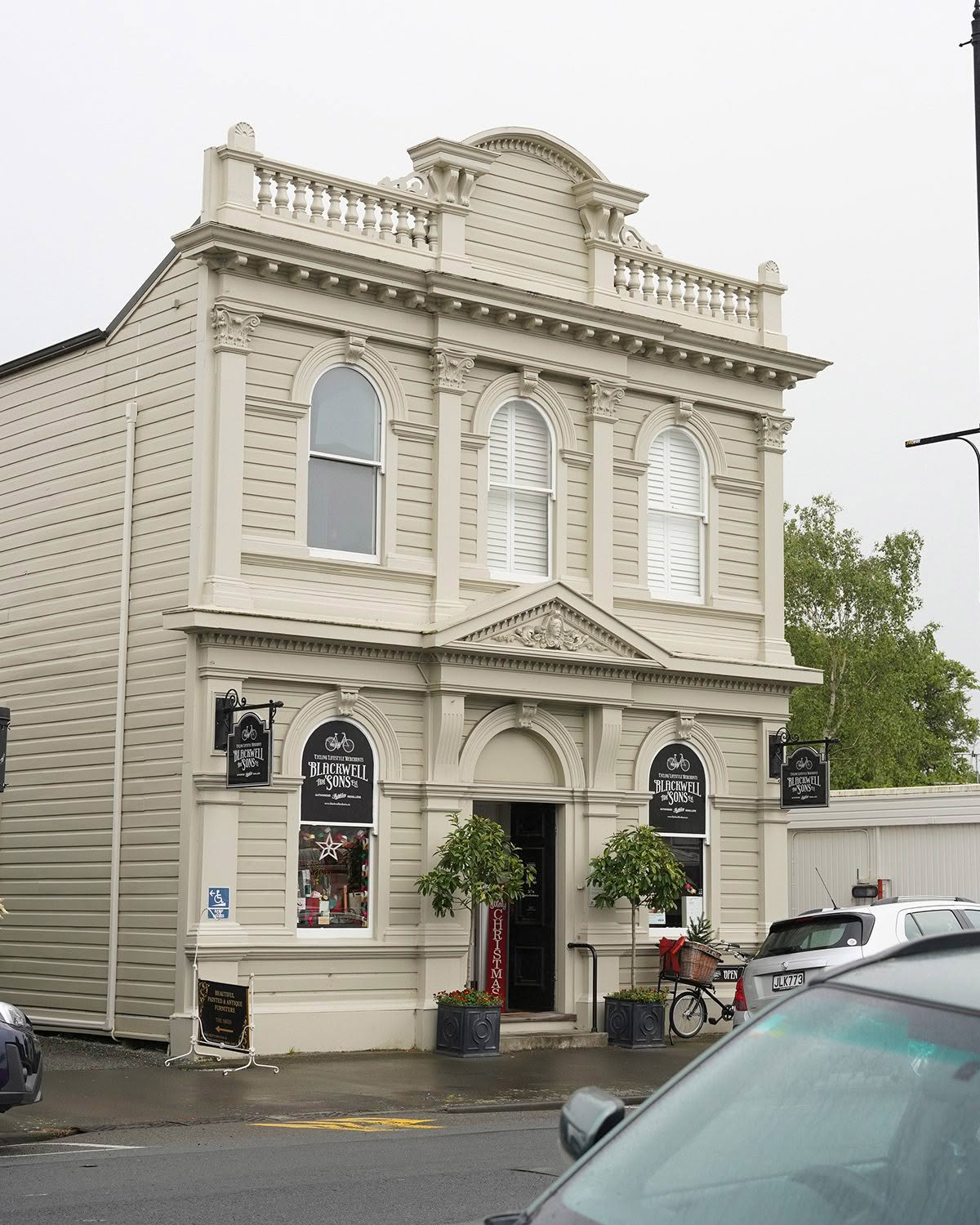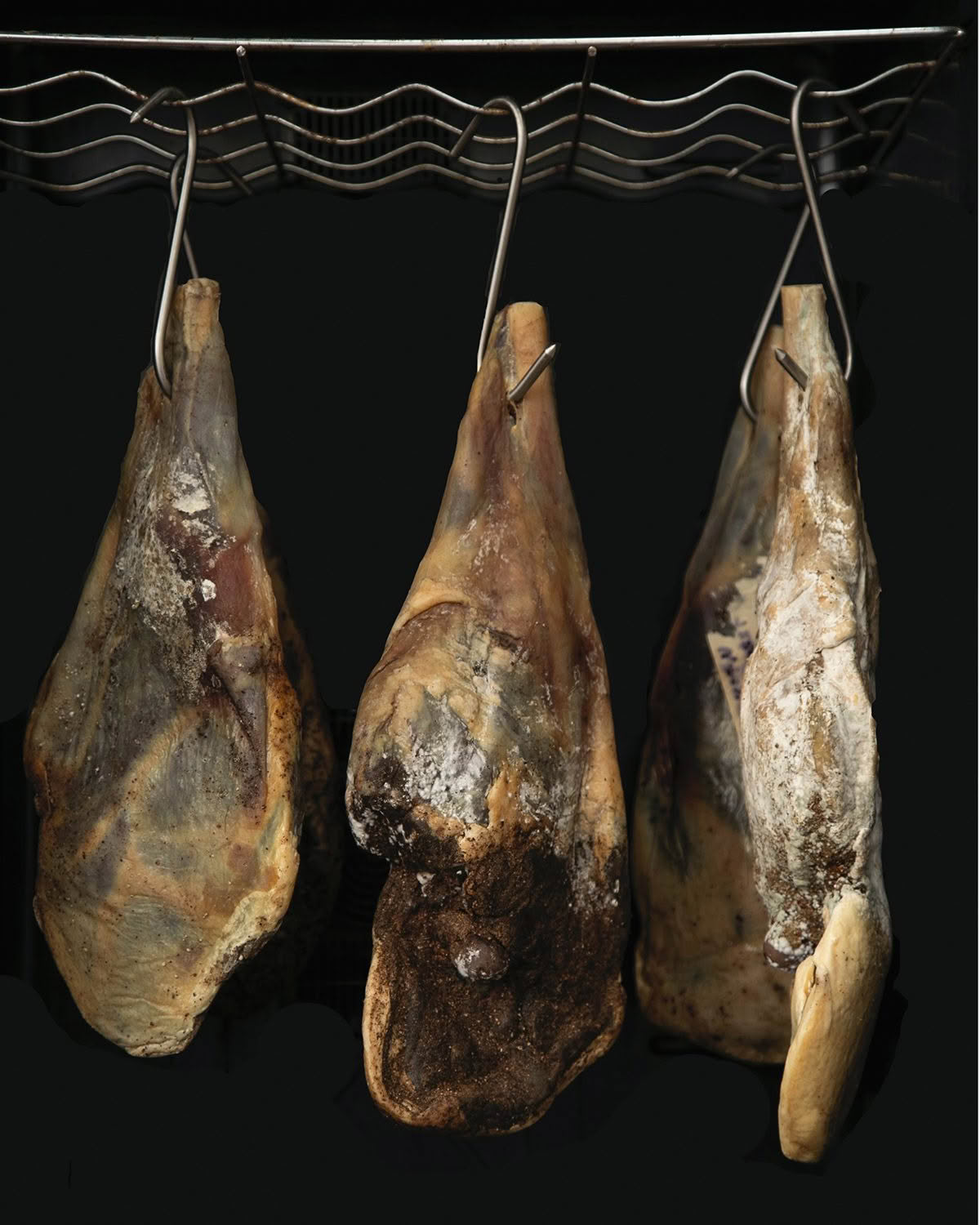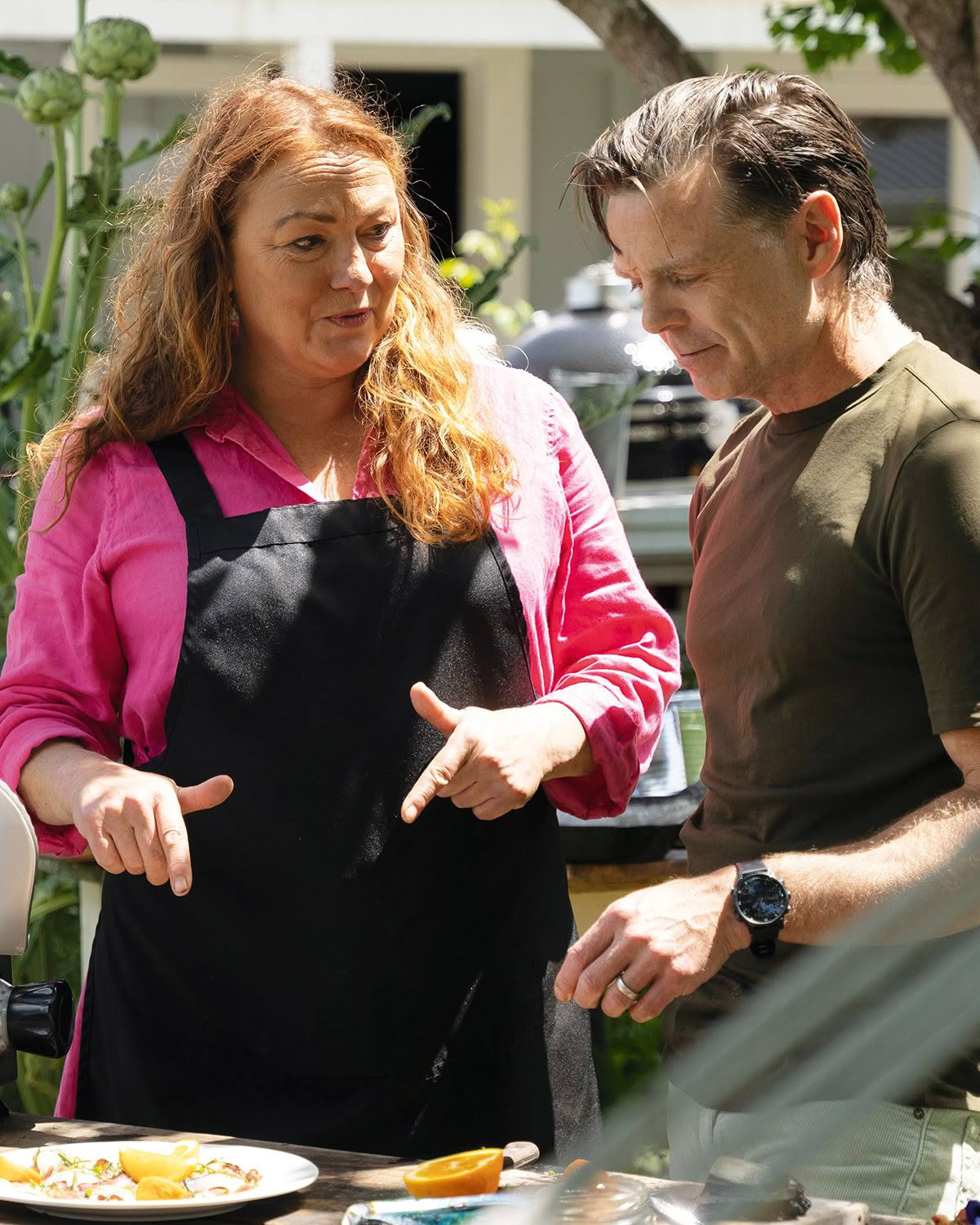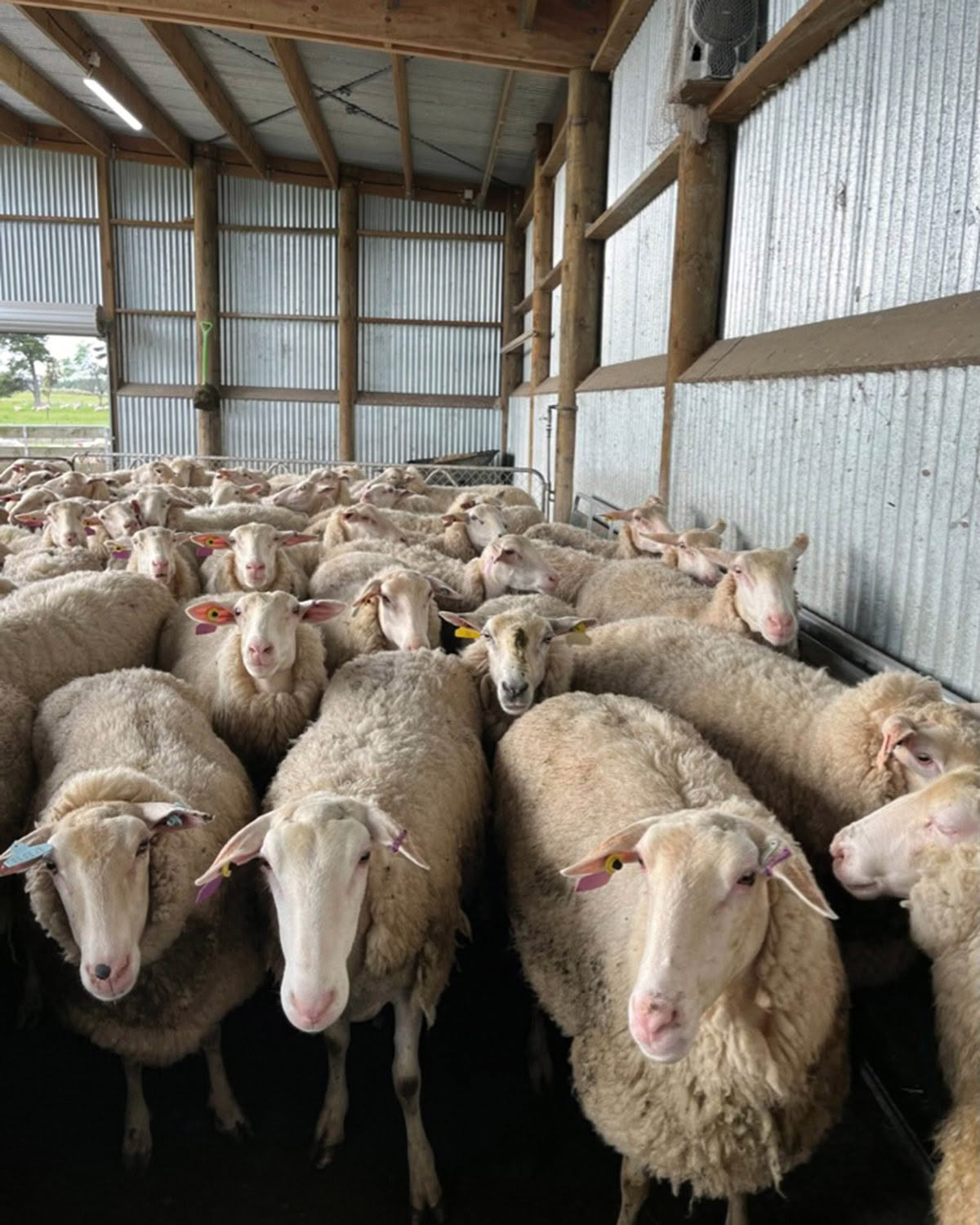I love the fact that the Wairarapa is one of those places in New Zealand that you have to make an effort to get to. You can’t really just stop by on your way to somewhere else. Its location weeds out the tyre kickers: only serious wine buffs, dark-sky enthusiasts, hikers and foodie fanatics apply here please.
The Tararua Ranges and the North Island fault line are natural geographical barriers protecting the great Wairarapa amphitheatre of produce, leaving this beautiful region relatively undiscovered. And, embarrassingly, I have to admit that it’s my first time here.
First stop on arrival is a cuppa with one of the godfathers of New Zealand cuisine, paying homage to the great Martin Bosley who now calls Greytown his home. I grew up as a young chef in New Zealand following chef Martin’s career and accolades. His hard work at his Wellington restaurants over the years helped shape New Zealand’s food identity and laid a blueprint for chefs like myself to continue the mahi. Martin continues to inspire as a food writer and his business – Yellow Brick Road – supplies incredible seafood to restaurants and to households ‘in the know’ around the motu.
Martin is a true champion of the Wairarapa. Spitting regional history, foodie facts and must-see local producers faster than a machine gun, he also takes the opportunity to give me a right old rev up about taking so long to visit. “Oui, Chef. I’m on it,” I say. And hit the road before I get another bollocking!
First up is chef Rachel Priestly, the owner of the Prodigal Daughter Gourmet Lodge in Martinbrough, our accommodation for our stay. Here Rachel hosts her guests, pours local wines, cooks great food from her kitchen garden and organises foodie tours..
However, there is lots more here than an awesome place to stay. Rachel is not only a chef, but also a butcher, with a focus on creating the most beautiful charcuterie from Aotearoa’s beef and lamb under her brand, Epicoria. The ancient process of humans preserving meat for consumption at a later date – before the invention of refrigeration – is fascinating. These days we carry on with these old traditions for the adventure and, of course, the amazing flavour of cured meat. Rachel takes me through the technique, effortlessly demystifying the process of salt curing, ageing, dehydrating and adding natural New Zealand culture to the meat, all of which combine to render a masterpiece of culinary art. Rachel’s focus on New Zealand lamb and the unique flavourings only found here, such as kawakawa, horopito and kelp, truly make her charcuterie a great New Zealand product with endless possibilities (see her recipe for pan-roasted tarakihi with clams & Epicoria Lamb mihi).
Next we head to Fernglen, a beautiful sheep dairy right on the North Wairarapa coast. There we meet young farmers and brothers Cameron and Ben Ravenwood. Fernglen is proudly the first farm dairy in New Zealand to be SPCA-certified and is a winner of the Ballance Farm Environment award.
I’m blown away to learn that sheep’s milk has 60 percent more protein than cow’s milk, is naturally A2 and homogenised, and is higher in important nutrients such as magnesium and phosphorus than other milks. With wool prices so low and lamb meat prices at the farm gate so inconsistent, the boys identified a gap in the milk market for an alternative to cow’s milk. They didn’t want to be at the mercy of the international commodity pricing for their sheep and lamb products, and decided to flip their family business and take their farm’s destiny into their own hands by selling their milk directly to the supermarkets. Boom! Bravery and mindset – I love this type of Kiwi story. But what about the flavour? Sheep’s milk is just so delicious and sweet, no lanolin taste at all. Drinking it fresh reminded me of being a kid and drinking melted ice cream off the kitchen bench when someone forgot to put it back in the freezer. Fernglen is a must-try next time you are in the dairy section of the supermarket.
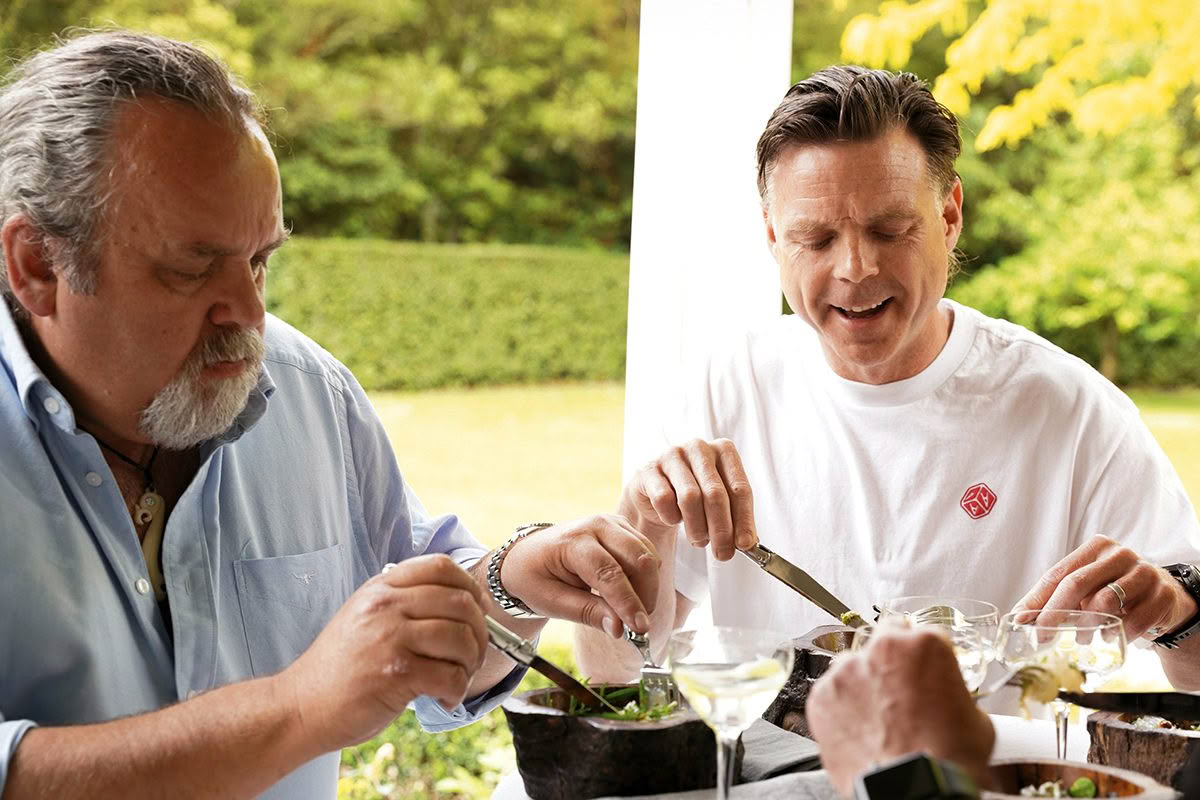
We cannot visit this region without hitting a vineyard, so on to Luna Estate in Martinborough.
There we meet the larger-than-life winemaker Joel Watson. Joel follows regenerative and organic farming principles in his vineyard, focussing on soil health. Joel’s environmental approach even led him to convert the trusty vineyard ute to run on deep-fryer oil from their restaurant, trading diesel fumes for the smell of frying wontons. Brilliance!
As we stand on top of a hill of clay and limestone on which Luna Estate is located, looking out to Lake Wairarapa, the Remutaka and the Tararua Ranges, we are blasted with the Wairarapa Nor’wester. Joel explains how this wind shapes this region, drying the grapes, thickening the skins and intensifying the flavour, ventilating the vineyard and protecting it from disease. As I drink Joel’s juice, I can taste it, too. I know I will be crucified for this next comment but maybe, just maybe, this howling wind gives the Martinborough region an edge, and is the reason why it makes the best pinot noir in New Zealand.
Our trip concluded with a visit to the unofficial mayor of Greytown and owner of the Greytown Distillery Company, Adam Blackwell. New Zealand’s artisan gin scene is world class and it is hard to keep up with all the innovation. Adam’s delicious Settler Gin comes in a small, convenient tin hip flask for the pocket of my ski jacket and a larger version which now sits proudly in the bar back home at Ahi.
After two days of non-stop filming for A New Zealand Food Story, I realise that we have barely scratched the surface in this remarkable region and, of course, Martin Bosley was right: we should have probably come here in the first season. The Wairarapa is truly worthy of a special journey and I can’t wait to bring the family back
SEE MORE FROM CUISINE
Try It… You’ll Like It Issue 231
Good things take time and, 27 years after the original tamarind…
Design File / Sam Griffin / Creative Director of CTRL Space / Auckland
I’ll need to come back in 50 years to talk again to Sam Griffin,…

